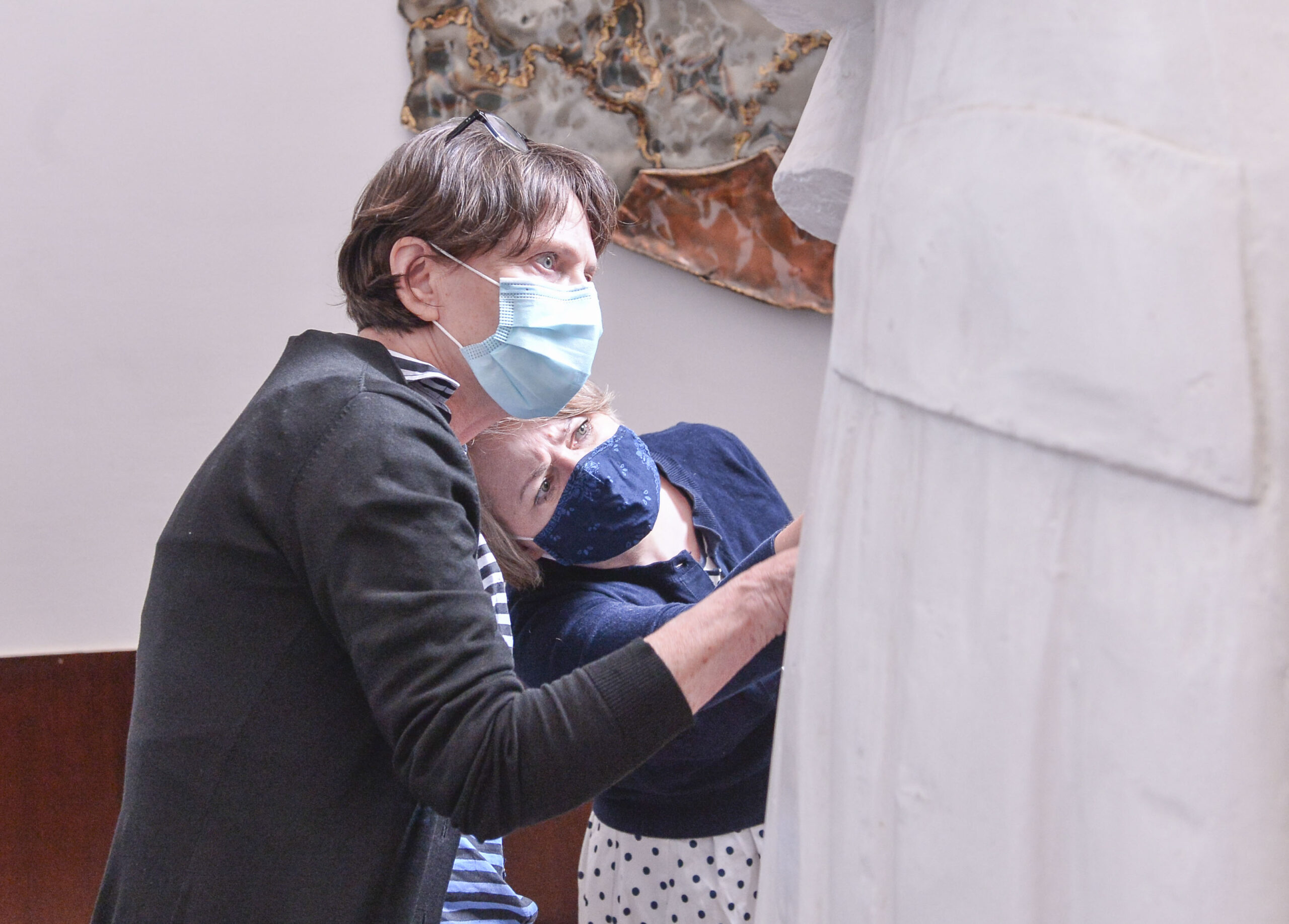MORGANTOWN — Patrick Henry is going under the microscope — figuratively and literally.
More accurately, the nearly nine-foot tall likeness of Henry standing at the base of the stairs in the turret portion of the Monongalia County Courthouse is going under the microscope.
Spurred by the curiosity of Monongalia County IT Coordinator Jeff Welsh, a pair of WVU art history professors are digging into the history of the statue, right down to the elements present in the paint on its surface.
“I’ve tried to learn as much about the history as I can since I’ve been working here. I feel like I get a unique perspective being in the building,” Welsh said, explaining that walking by the statue during his daily rounds was eventually more than his curiosity could bear.
That’s when he reached out to Rhonda Reymond, an associate professor of art history at WVU. Reymond, in turn, reached out to colleague Hanna Szczepanowska, an assistant professor of art history who specializes in analysis of cultural heritage material.
What we already know is that Henry, of the famous quote “Give me liberty or give me death,” put pen to paper as the governor of Virginia in 1776, creating Monongalia County.
Some 70 years later, Monongalia County resident L.S. Hough proposed a statue in honor of the event and raised the $125 needed for artist Ebenezer Mathers to carve the likeness from a single log sourced in South Morgantown, then called Durbannah.
The statue stood on the cupola of the previous county courthouse from the time the building was constructed, in 1851, to just before it was torn down, in 1890.
It’s since stood in various places, including Morgantown High School and the Morgantown Public Library.
On Oct. 8, 1976, it came back home and took up residence inside the current courthouse, just in time for the county’s 200th birthday.
And that’s where it stood Friday, as Szczepanowska poked and prodded and used a Miscope to get highly detailed, magnified images of the statue’s surface — all the while pointing out the various layers of paint and other materials present.
Szczepanowska also collected material samples that will undergo various laboratory tests, including X-Ray Diffraction Spectroscopy, which will help identify the various elements present in the sample.

In the meantime, Reymond and a class of art historians will be digging into the documents.
“You want to merge the different kinds of evidence; the historical and archival, things like bills of sale and things like the costuming and wigs,” Reymond said, explaining that she plans to bring her students in to get a first-hand look at the statue.
“They’ll be thinking about the different contexts historically that are needed to really understand the sculpture,” she said. “It’s painted white. Why is that? Maybe it’s to mimic marble, but we’ll do that research and the students will bring their own questions from their own perspectives.”
TWEET @DominionPostWV





